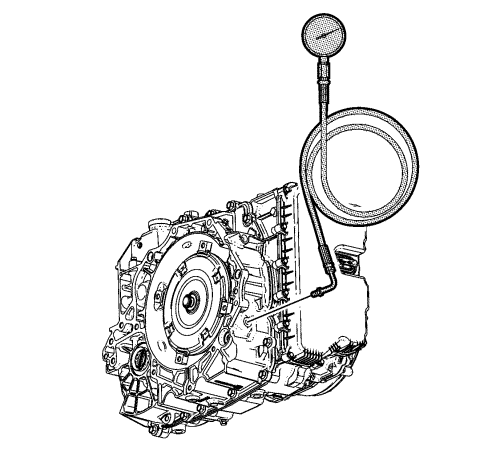Volt |
||||||||
|
|
|
|||||||
EN 21867-A Pressure Gauge
For equivalent regional tools refer to Special Tools

Warning: Keep the brakes applied at all times in order to prevent unexpected vehicle motion. Personal injury may result if the vehicle moves unexpectedly.
Note: Depending on the hybrid/EV battery state of charge the engine may not start. To start or keep the engine running open the hood.
Warning: When the transmission is at operating temperatures, take necessary precautions when removing the auxiliary pump pressure test hole plug, to avoid being burned by the catalytic converter.
Note: You may need to remove or disconnect components in order to gain access to the transmission line pressure test hole plug.
Note: In order to achieve accurate line pressure readings, the following procedure must be performed at least 3 times in order to gather uniform pressure readings. Also if you do not have the hood open the engine may go in to AutoStop.
The scan tool is only able to control the line Pressure Control solenoid in PARK and NEUTRAL with engine speeds below 1500 RPM. This protects the clutches from extreme high or low line pressures.Caution: Refer to Fastener Caution in the Preface section.
| © Copyright Chevrolet. All rights reserved |